On the Plane
I am writing this journal while sitting on a L-100 plane, flying over Antarctica and the Southern Ocean on my way to New Zealand. The plane I was supposed to head home on yesterday, a C-130 plane, had mechanical issues. Instead I am traveling home in a South African cargo plane.
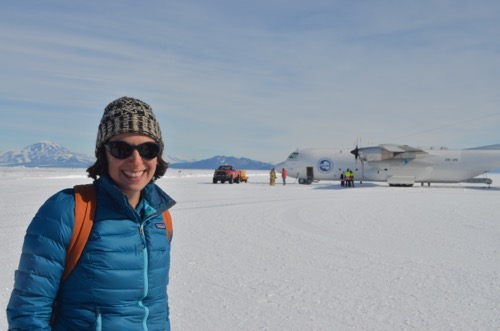

It is interesting to get to fly on different cargo planes. Unlike the C-17 plane I flew on to Antarctica on, this plane has seats facing forwards. Shortly after taking off, one of the two men managing our flight handed me a flashlight and asked me to check the levels of fluid through a hole behind me over the loud din of the engines. Hopefully I understood his instructions correctly!


I will arrive in New Zealand tonight and will have one day in Christchurch before flying back to Pennsylvania on December 6th.
A Busy Morning in McMurdo
Before leaving Antarctica, I had time this morning to visit a few last people and places.
The Waste Barn
After touring the utilities plants the other day, I became interested in touring the waste plant, where trash and recyclables are organized. Nikki Beard, who manages the plant, invited me to visit the building this morning.
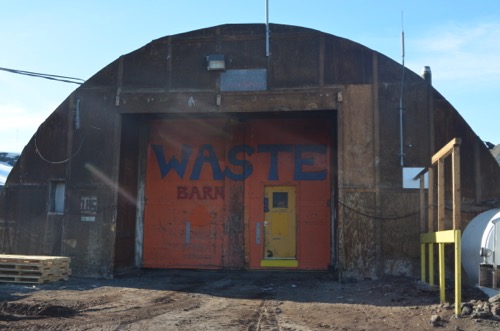
On my walk up to the Waste Barn, I met a "fuelie" by the name of Lisa Keller. Fuelies are people who help keep McMurdo Station running by ensuring generators, tanks and other equipment have ample fuel in them. Lisa found an interesting pattern on the outside of a nearby fuel tank.

Click on the Ice POD PowerPoint slide at the end of this journal to see a closer picture of the pattern!
Sorting Out Waste
Once inside the Fuel Barn, Nikki showed me around. Nikki and her staff build waste boxes which will be filled up with different types of refuse inside the main room in the waste barn.
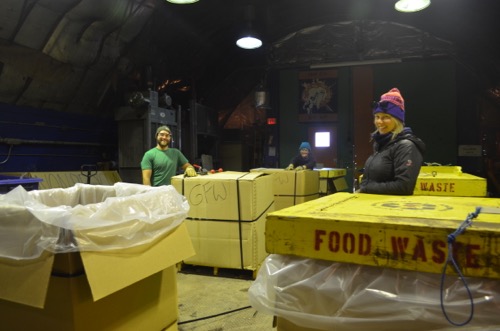
The boxes that are built are placed around McMurdo Station for people to put sorted trash in. Waste is separated into different categories at McMurdo Station: Mixed Recycleables, Non-Recyclables, Food Waste, Biological Waste, Sanitary Waste, Cardboard, Metals (Ferrous and Non-Ferrous), Wood and Hazardous Waste (which gets processed in the Hazardous Waste yard). There are also other waste types to consider, such as solid waste, grey water, and skua (objects that can be reused at the station). Every day someone from the waste department walks around town and checks the waste bins. Those that are full are pulled out and replaced with empty boxes. Nikki estimates that the station goes through about 100 bins a day. Food Waste and Cardboard are the most frequently collected bins. Just like with Hazardous Waste, the other waste is collected and stored in big cargo containers called Milvans, which will be shipped back to California on the cargo ship.
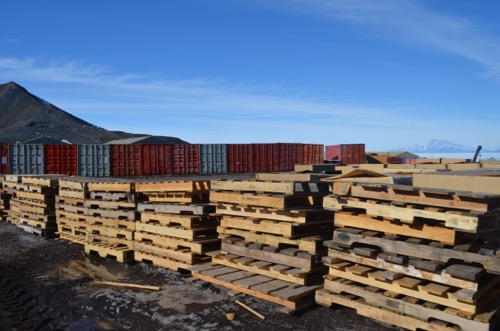
Nikki and the waste crew have a very important job to do! About 300 milvans of waste get shipped back each year. 65% of all the waste created at McMurdo Station gets recycled. The rates in the U.S. are much lower (around 25%). Nikki is passionate about making sure our impact here is low and is always thinking of new ways to improve the system.
Like George Ryan from the Hazardous Waste station, Nikki and the waste crew are also on the spill response team. This means that when someone spills a hazardous material, such as fuel, at McMurdo Station, Nikki comes out to help clean up the spill and makes sure the environment is not contaminated. In this sense, her work is directly connected to our research--because of the spill response team, McMurdo Station is reducing its footprint. Our research shows that the levels of pollutants are not increasing over time. Cleaning up spills is a major way that we can keep the environment from being further contaminated.
Meet Bev Walker
I also had the chance to chat with Bev Walker today, who manages all of the science groups at Crary Lab. Bev wears many hats in her position and makes sure scientists working at Crary and beyond are supported. Because of her and her team, research projects run smoothly here at McMurdo!
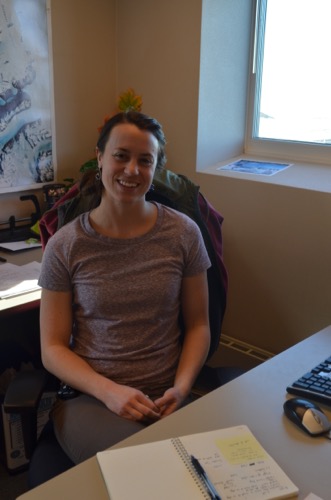
Bev has a background in science. As a college student, she studied marine and freshwater sciences and then pursued a graduate degree in earth and environmental sciences. Her graduate work brought her to Antarctica, where she researched how brittle sea stars were fossilized off the coast of Antarctica. When she was down here she fell in love with the diversity of science projects that occur at McMurdo Station as well as the unique personalities of people who work here.
Bev has been here for 6 years and has had many memorable experiences. She comes down at "winfly", which is the first flight onto the ice after winter. During this time there is a long sunset in the sky, with periods of darkness. One experience Bev treasures is getting to see beautiful aurora fill the sky. Bev also has been here when the sea ice by McMurdo Station has completely melted. This allowed a pod of 70 or so Minki Whales to catch a long breath of air after swimming under the sea ice, a memory that also will stay with Bev forever.
Ice Picture of the Day
Today's Ice POD is about the cool pattern found on the fueling tank outside the Waste Barn. Can you figure out what caused them? You can download the PowerPoint Slide here: 24_icepod.pptx
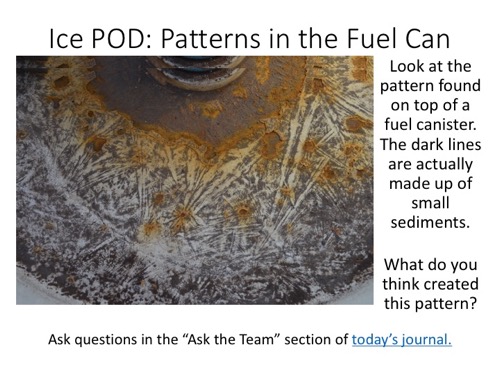
Brought to you by...
Today's journal is brought to you by Mrs. Hovis' class from Mount Nittany Elementary School in State College, PA.

| Attachment | Size |
|---|---|
| 24_icepod.pptx3.76 MB | 3.76 MB |

Comments